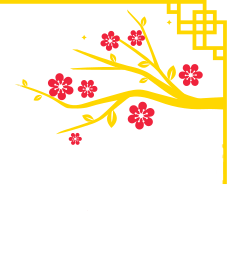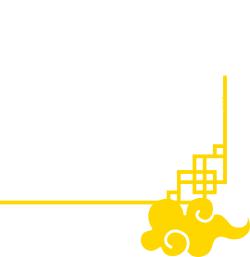Anyone who has dared to search the internet for language learning methods knows that there is a mountain of results that come back. You will find some scholarly articles by academics and professional linguists that are deep and technical.
Then you will also find a huge amount of blog posts and articles written by companies and bloggers trying to sell you language learning systems, books, videos and subscriptions to their various programs and courses.
What is harder to find is unbiased reviews and recommendations for tools and methods from people who are not trying to sell you something. Did I mention I am not trying to sell you anything?
Everything here is for the Chinese language learning community - my way of paying forward what all the other great teachers and internet Lǎoshī have shared with me.
Keep in mind also that a lot of what you find posted on the internet as language learning methods are really just tips, tools or training courses. Many proprietry language learning courses like to promote the way they package up their lessons as a unique technology but in truth a lot are really just variations on well known methods. These tried and tested systems include flashcards, vocabulary lists, reading material and audio/video packages.
These are not teaching methods, they are inputs that have been packaged into different media formats. In reality there is no shortage of free material for you to find and use as sources of input. I have quite a few for you to explore right here in my inputs section.
I am not wanting to add to the mountains of confusing information already out there. Rather I want to reduce it down and make an easy to navigate place with just the good parts and without the sales spin. Information and material that I have found helpful to me for my language learning journey, I am sharing here for other learners.
So here is a short list of a few relevant language learning methods, with just the right amount of detail to give you a quick understanding of each one. You will find that I use combinations of these methods in My Approach.
This method focuses on learning a lot of words first - mostly using concious memorisation. It's the type of style you will commonly find in travel phrasebooks, often with various themes such as checking in at a hotel or ordering food in a restaurant. The tools we often use for this method include flashcards, word lists and frequency lists, phrases and sentences.
Pros
Cons
This is the more traditional style of language learning that you can find in older text books. Lessons normally introduce a few new words along with grammer rules you need to memorise. The lessons make you practice using the words in combinations of different sentence structures to teach you very precise and correct usage.
Pros
Cons
Watch Stephen Krashen and Jeff Brown talk about the problems with learning grammer.
You will hear about this method when people move to a foreign country and force themselves to learn the local language just by trying to get by doing everyday things. Now going to the store and shopping becomes a langugae lesson and little by little they build up their comprehension and speaking ability. This is really just a way to get tons of comprehensible input from everywhere around you (see below for CI).
Some people also try to use the immersion method in their home country by surrounding themselves with lots of input in the target language. You can do things like labeling your funiture at home with the Chinese names, watching Chinese films and TV and hanging out with friends who speak Mandarin. It's not quite the same as 'being there' and neither of these approaches is foolproof as you will see in the cons below.
Pros
Cons
The aim of this method is to get you conversational as fast as possible. Accuracy is less important than communication.
As you would guess the focus here is more on speaking and listening than studying word lists and grammer rules. The philosophy is that by talking with a safe and sympathetic native speaker will help you acquire language subconciously. Similar to how children might acquire language from a parent who is gentle and tailors their level of speech to the level the student can cope with.
Pros
Cons
Comprehisble Input (CI) is a key component of Stephen Krashen's theory of second language acquisition (SLA). I find this the most interesting and promising of the methods and use it heavily in My Approach.
CI is less a method and more of a tool for language acquisition that other methods can utilise (see TPRS below).
It is very similar to the way a parent may introduce language to a child in that you may have never heard the words before but you can still understand their meaning through expression, gestures, pictures and other non-verbal cues. This makes the input 'comprehensible' and helps your subconcious mind associate the words with meanings rather than translating words from one language to another in your head.
In Stephen Krashen's words:
"The best methods are therefore those that supply 'comprehensible input' in low anxiety situations, containing messages that students really want to hear. These methods do not force early production in the second language, but allow students to produce when they are 'ready', recognizing that improvement comes from supplying communicative and comprehensible input, and not from forcing and correcting production."
Pros
Cons
Teaching Proficiency through Reading and Storytelling (TPRS) is a teaching method that uses comprehensible input for second language acquisition. New words and structures are introduced with gestures, pictures and repetitive questioning techniques to transfer meaning. The new vocabulary is then used in story telling to further cement unerstanding with follow up questions about the story.
TPRS lessons should be mostly conducted in the target laguage with only minor exceptions or small structural explanations outside of it.
A technique called circling involves asking continuous personalised questions in various ways to reinforce understanding. This method may seem strange at first but there is a proven structure underlying these techniques that is similar to how we acquire our first native language.
Pros
Cons
This was a very brief introduction to several different methods for learning a second language. The aim here was not to cover everything in detail but introduce the core concepts and those methods that will be interesting to us as Chinese language learners.
You may be wondering which of these methods is the best and why haven't I ranked them or given you guidance on which to choose? Well it is because no single method on its own is the ultimate best fit for everyone.
While I personally place quite a heavy emphasis on TPRS and comprehensible input, you will see in My Approach that I have selected elements of all of these different methods to use in my Mandarin learning journey.
Of course we all will have different preferences and capabilities and you should tailor your personal approach with just the right mix of these methods that work well for you.

